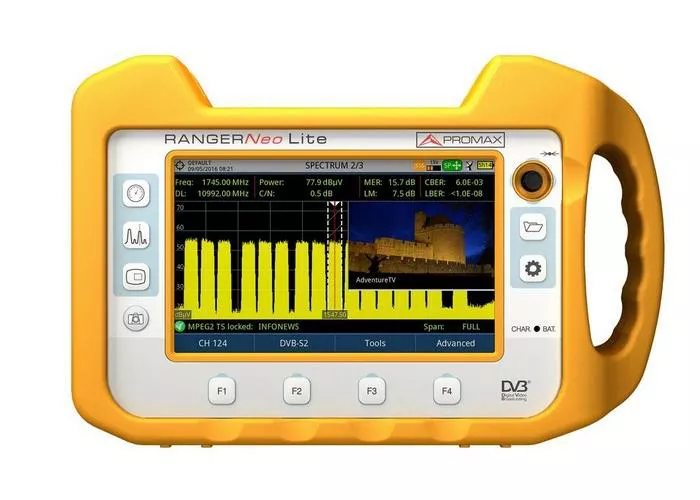In modern industries and scientific research, precise measurement and data analysis are crucial for efficiency, safety, and quality control. One of the key instruments used for such purposes is an analyzer. Analyzers are devices or instruments designed to measure, assess, and interpret specific parameters of a given substance or system. These devices are used across multiple disciplines, including chemistry, physics, engineering, and environmental science, to provide critical insights into various materials and processes.
This article aims to explore what an analyzer is, how it works, the different types of analyzers, and their wide-ranging applications in various industries.
What is an Analyzer
An analyzer is an instrument used to examine substances, processes, or systems by detecting, measuring, and interpreting certain parameters. These parameters can include chemical composition, physical properties, electrical signals, and mechanical performance. Analyzers play a significant role in quality control, diagnostics, safety monitoring, and process optimization.
Analyzers come in different forms, from handheld portable devices to large industrial-grade machines. They work based on specific scientific principles such as spectroscopy, chromatography, electrochemical detection, or mechanical analysis.
How Do Analyzers Work
Analyzers operate based on a variety of scientific principles, depending on their type and purpose. Some of the most common working principles include:
Spectroscopy: Many analyzers use spectroscopic techniques, such as infrared (IR), ultraviolet-visible (UV-Vis), and atomic absorption spectroscopy, to determine the composition of a material by analyzing the interaction of light with the substance.
Chromatography: Gas and liquid chromatographic analyzers separate mixtures into individual components, allowing precise identification and quantification of substances.
Electrochemical Analysis: Some analyzers work based on electrochemical principles, where electrical signals (voltage, current, or resistance) change in response to chemical reactions, providing accurate readings of ion concentrations or other parameters.
Thermal Analysis: Devices such as differential scanning calorimeters and thermogravimetric analyzers measure changes in temperature, heat flow, and mass to analyze the thermal properties of materials.
Acoustic and Ultrasonic Methods: These methods rely on sound waves to detect flaws in materials, analyze particle distribution in liquids, or measure fluid density.
Types of Analyzers
Analyzers are classified based on their function and the type of parameters they measure. Some of the most common types include:
Gas Analyzers
- Measure the composition of gases in industrial, medical, or environmental applications.
- Common types: Oxygen analyzers, carbon dioxide analyzers, gas chromatography analyzers, and exhaust gas analyzers.
Liquid Analyzers
- Used to test the composition of liquids, such as water, fuels, and chemicals.
- Examples: pH meters, conductivity analyzers, turbidity analyzers, and chemical oxygen demand (COD) analyzers.
Particle Analyzers
- Determine the size, shape, and distribution of particles in powders or suspensions.
- Examples: Laser diffraction analyzers and dynamic light scattering (DLS) analyzers.
Spectral Analyzers
- Analyze materials based on their spectral characteristics.
- Examples: Mass spectrometers, Fourier-transform infrared (FTIR) analyzers, and X-ray fluorescence (XRF) analyzers.
Mechanical Analyzers
- Evaluate the mechanical properties of materials, such as hardness, tensile strength, and fatigue resistance.
- Examples: Hardness testers, impact testers, and fatigue testing machines.
Biomedical Analyzers
- Used in medical diagnostics to assess blood, urine, and tissue samples.
- Examples: Blood gas analyzers, hematology analyzers, and DNA sequencing analyzers.
Applications of Analyzers in Industries
Industrial Manufacturing
- Quality control and safety monitoring in manufacturing processes.
- Monitoring emissions from industrial equipment to comply with environmental regulations.
Healthcare and Medical Diagnosis
- Blood analyzers for detecting diseases and monitoring patient health.
- Spectroscopic and chromatographic analyzers for drug development.
Environmental Monitoring
- Air and water quality analyzers help detect pollution and contamination levels.
- Gas analyzers monitor emissions from factories and vehicles to ensure environmental compliance.
Oil and Gas Industry
- Composition analysis of crude oil, natural gas, and petroleum products.
- Leak detection and process optimization using gas analyzers.
Food and Beverage Industry
- Nutritional content analysis and contamination detection.
- pH and moisture analyzers ensure food safety and product consistency.
Pharmaceutical Industry
- Drug formulation and quality control.
- Analyzers help monitor stability and composition of pharmaceutical products.
Automotive Industry
- Exhaust gas analyzers check vehicle emissions.
- Lubricant analyzers assess the condition of engine oils.
Benefits of Using Analyzers
Accuracy and Precision
Analyzers provide highly accurate measurements, reducing errors in data collection and analysis.
Efficiency and Speed
Automated analyzers deliver faster results, saving time in critical applications.
Cost Reduction
Early detection of defects and inefficiencies can prevent costly repairs and production losses.
Regulatory Compliance
Many industries require strict adherence to regulatory standards, which analyzers help achieve by ensuring consistent monitoring and reporting.
Improved Safety
Continuous monitoring of hazardous gases, chemicals, and mechanical properties enhances workplace safety.
Conclusion
Analyzers are indispensable tools across multiple fields, from industry to healthcare and environmental monitoring. By leveraging different scientific principles, they provide precise data critical for decision-making, quality control, and safety assurance. With continuous advancements in technology, analyzers are becoming more sophisticated, offering better accuracy, automation, and integration with digital systems.
Understanding the various types of analyzers and their working principles helps industries choose the right tools for their needs, leading to improved efficiency, compliance, and safety. As technology progresses, we can expect even more innovative applications and improved performance in analyzer technologies.

